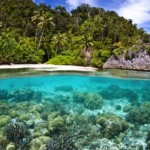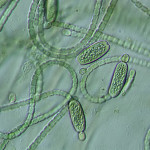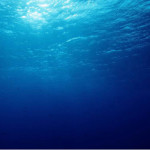
I was lucky enough to attend an all-day workshop today, just down the road at Georgia Tech, where Prof. Mark Hay organised the Teasley Symposium on the interactions between corals and seaweeds on reefs. Like many, I was aware that coral reefs can become “algae reefs” if they become too denuded of live coral cover, but I never appreciated the complexity and subtleties of how reef-forming corals interact with their more strictly plant-like photosynthetic neighbours. Speakers included Peter Mumby from my Alma, the University of Queensland, Bob Steneck from U. Maine and Nancy Knowlton from Smithsonian, to name but three. Common themes included (1) the diversity of chemical defences that algae use to kill corals with which they come into contact, (2) that algae, especially turf algae, produce large amounts of dissolved organic carbon (like sugars) that promote localised bacterial blooms and lethal (to corals) hypoxia along the margins of contact with corals, (3) that the greater resilience of Pacific reefs to disturbance by diseases, cyclones and bleaching events may stem from a greater herbivorous fish diversity that can keep algae at bay long enough for corals to recover, (4) conversely, that the effective decimation of many Caribbean reefs may stem from a species poor assemblage of grazers that is, certainly in the case of the sea urchin Diadema, not doing so well itself.

The stand-out for me was an elegant set of experiments by Doug Rasher, a newly-minted PhD from Hay’s lab, showing that Chlorodesmis, a rich green hairy algae sometimes called turtle weed, is a veritable black belt in allelopathy (antagonistic competition mediated by secreted chemicals). In some instances, just a single minute of contact between Chlorodesmis and a coral was enough to produce partial loss of photosynthetic ability in the coral that lasted days, and longer exposures often rapidly lead to visible bleaching and coral tissue death. Other work from that group showed that the chemicals responsible are bound to the algae surface and not released into the water. Take home message: don’t mess with Chlorodesmis, its endogenous terpenes will mess. you. up. Given their relative wussiness in the face of such ninja-like chemical defences, what’s a coral to do? In many cases, the answer seems to be get yourself a body guard: any number of mutualistic herbivorous critters (crabs, shrimp, blennies etc.) that live among the coral branches and vigorously attack any Chlorodesmis filaments that might drift too close to the scleractinian shangri-la.
It’s no surprise that inter-species interactions between corals and seaweeds should be ubiquitous; these sorts of intimate relationships are a hallmark of life on all coral reefs. What has been really interesting to think about is how the elegant case studies described today might scale up to define patterns of reef ecology at the landscape and regional scales. And all of it is set against a fascinating backdrop of a rapidly shifting climate system that is a profound driver of reef function. Some of the predictions about the future of reefs are enough to make you want to open a vein or two and we certainly weren’t going to solve any of those problems in a one day symposium about corals and seaweeds, but that doesn’t diminish the importance of science well done and the significance of the work to our understanding of how reefs function (or not), for now at least.






Wow. Thanks for posting this!
The list of speakers is a veritable who’s who. I was not aware of all the subtleties of the interactions and the diversity of tactics. I’ve gotten away from keeping up with the tropical reef research, gotta correct that since it is the whole mangrove-seagrass-sandflats-reef landscape and diversity that I fell in love with. Drop me in the water by a mangrove caye near a reef and I’m happy as a lionfish in the Bahamas.
“happy as a lionfish in the Bahamas”. Niiiice